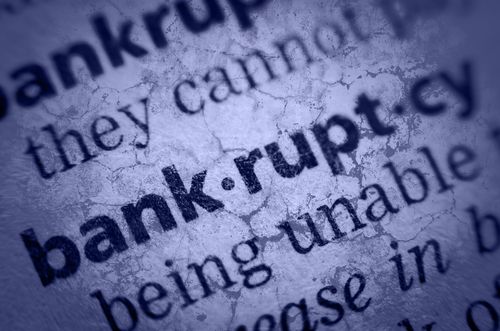[fusion_builder_container hundred_percent=”no” hundred_percent_height=”no” hundred_percent_height_scroll=”no” hundred_percent_height_center_content=”yes” equal_height_columns=”no” menu_anchor=”” hide_on_mobile=”small-visibility,medium-visibility,large-visibility” status=”published” publish_date=”” class=”” id=”” border_size=”” border_color=”” border_style=”solid” margin_top=”” margin_bottom=”” padding_top=”” padding_right=”” padding_bottom=”” padding_left=”” gradient_start_color=”” gradient_end_color=”” gradient_start_position=”0″ gradient_end_position=”100″ gradient_type=”linear” radial_direction=”center” linear_angle=”180″ background_color=”” background_image=”” background_position=”center center” background_repeat=”no-repeat” fade=”no” background_parallax=”none” enable_mobile=”no” parallax_speed=”0.3″ background_blend_mode=”none” video_mp4=”” video_webm=”” video_ogv=”” video_url=”” video_aspect_ratio=”16:9″ video_loop=”yes” video_mute=”yes” video_preview_image=”” filter_hue=”0″ filter_saturation=”100″ filter_brightness=”100″ filter_contrast=”100″ filter_invert=”0″ filter_sepia=”0″ filter_opacity=”100″ filter_blur=”0″ filter_hue_hover=”0″ filter_saturation_hover=”100″ filter_brightness_hover=”100″ filter_contrast_hover=”100″ filter_invert_hover=”0″ filter_sepia_hover=”0″ filter_opacity_hover=”100″ filter_blur_hover=”0″][fusion_builder_row][fusion_builder_column type=”1_1″ layout=”1_1″ spacing=”” center_content=”no” link=”” target=”_self” min_height=”” hide_on_mobile=”small-visibility,medium-visibility,large-visibility” class=”” id=”” hover_type=”none” border_size=”0″ border_color=”” border_style=”solid” border_position=”all” border_radius=”” box_shadow=”no” dimension_box_shadow=”” box_shadow_blur=”0″ box_shadow_spread=”0″ box_shadow_color=”” box_shadow_style=”” padding_top=”” padding_right=”” padding_bottom=”” padding_left=”” margin_top=”” margin_bottom=”” background_type=”single” gradient_start_color=”” gradient_end_color=”” gradient_start_position=”0″ gradient_end_position=”100″ gradient_type=”linear” radial_direction=”center” linear_angle=”180″ background_color=”” background_image=”” background_image_id=”” background_position=”left top” background_repeat=”no-repeat” background_blend_mode=”none” animation_type=”” animation_direction=”left” animation_speed=”0.3″ animation_offset=”” filter_type=”regular” filter_hue=”0″ filter_saturation=”100″ filter_brightness=”100″ filter_contrast=”100″ filter_invert=”0″ filter_sepia=”0″ filter_opacity=”100″ filter_blur=”0″ filter_hue_hover=”0″ filter_saturation_hover=”100″ filter_brightness_hover=”100″ filter_contrast_hover=”100″ filter_invert_hover=”0″ filter_sepia_hover=”0″ filter_opacity_hover=”100″ filter_blur_hover=”0″ last=”no”][fusion_text columns=”” column_min_width=”” column_spacing=”” rule_style=”default” rule_size=”” rule_color=”” hide_on_mobile=”small-visibility,medium-visibility,large-visibility” class=”” id=”” animation_type=”” animation_direction=”left” animation_speed=”0.3″ animation_offset=””]
Do you feel like you’re drowning in debt? If so, filing for bankruptcy has crossed your mind at least. You may have even given it some serious thought. But bankruptcy is a big decision and should be considered carefully. Knowing the basic facts is a good first step.
There are two types of bankruptcy: Chapter 7 and Chapter 13. With Chapter 7 bankruptcy, your nonexempt assets are liquidated to pay off as much of your debt as possible before discharging the rest. You must pass the Chapter 7 Means Test to qualify. Keep in mind that most of your nonexempt property will be sold and you can only file for this type of bankruptcy once every 6 years.
Chapter 13 bankruptcy requires you to follow a payment plan for 3 to 5 years, and then the remainder of your debt is discharged. You cannot have more than $383,175 of unsecured debt or $1,149,525 of secured debt to qualify. You get to keep all of your property but must pay the value of your nonexempt property. You can file for Chapter 13 bankruptcy anytime after the close of either type of bankruptcy.
You will also need to take your financial situation into consideration. Not all types of debt are discharged through bankruptcy. If most of your debt is student loans, taxes, child support, or alimony, filing for bankruptcy will not be beneficial. It will also make your credit dip so it is not the best option if you are trying to improve your credit score. However, if you have low credit, your score will not plummet as drastically. You should also take into account that filing for bankruptcy will cost between $1,000 to $2,500, as well as time away from work that you won’t be getting paid for.
If you decide that bankruptcy isn’t the choice for you, there are alternatives, One option would be debt consolidation loans. These loans allow you to have one monthly payment to one company instead of having to remember to pay multiple companies. Just be cautious and make sure to use only reputable companies. Another option is credit counseling, which can help you negotiate better terms with your creditors. If you feel you can negotiate on your own behalf, you can skip credit counselor.
Whether or not you decide to file for bankruptcy, know that it’s not the quick, easy fix that it is sometimes cracked up to be. Although it will cost you more money, it’s a good idea to get the advice of a lawyer, even if you do your own filing.
[/fusion_text][fusion_separator style_type=”none” hide_on_mobile=”small-visibility,medium-visibility,large-visibility” class=”” id=”” sep_color=”” top_margin=”10px” bottom_margin=”10px” border_size=”” icon=”” icon_circle=”” icon_circle_color=”” width=”” alignment=”center” /][fusion_text columns=”” column_min_width=”” column_spacing=”” rule_style=”default” rule_size=”” rule_color=”” hide_on_mobile=”small-visibility,medium-visibility,large-visibility” class=”” id=”” animation_type=”” animation_direction=”left” animation_speed=”0.3″ animation_offset=””]By: Alecia Stanton[/fusion_text][/fusion_builder_column][/fusion_builder_row][/fusion_builder_container]




